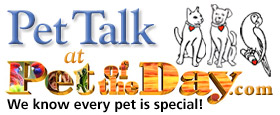Quote:
Originally posted by stacwase
AWESOME! Do you have a lot of sled dog races up there? Here, we have the UP 200 every year. It was just last week or the week before, I believe. I've only gone to watch once - I was so surprised at how small the dogs were. Nothing like the movies.
We have a local race every weekend from the end of January to mid-March. In Alaska you can race every weekend from November to April. There are lots more races over there and way more mushers.
My dogs are huge compared to most sled dogs. Sprint dogs generally weigh about 35 pounds. My smallest is Hobo and he weighs about that, but most of my dogs weigh between 50-70 pounds with a couple over the 100 pound mark. Most racing dogs are hound or pointer crosses so they don't even look much like Huskies anymore.
Quote:
Originally posted by stacwase
How do you keep them from going before you're ready? And when you train a new dog do the experienced dogs help a lot with the training, or do you have to start from scratch?
When I'm hooking up, I tie a rope around a fence post with a slip knot and set two snow hooks. Snow hooks are like small anchors for the sled. They aren't terribly reliable though and a team can pop them out of the snow if they really want to. That's why I use two. One of them will usually hold.
Experienced dogs are invaluable in training new dogs, especially leaders. Dogs can teach each other things that a human never could. It's very important that a dog's first few times in harness be nothing but fun. If they have a bad experience, they may never run. I always put new dogs beside a calm, experienced dog, usually Earle. I also up my best leaders up front when a new dog is joining the team. That helps ensure the run will go more smoothly. Training from scratch can be done, but it's much quicker with another dog to help.
Quote:
Originally posted by stacwase
Do you have more dogs than you need, so that you can still race if one is sick or injured?
I only need six to 8 dogs to run a team so I do have more than I technically need. However, my dogs are always given the choice of coming or not on every run. If one doesn't want to come, someone else will. It's important to have more leaders than you actually need, especially if you race. I've had trouble this winter because I only have two command leaders--Pingo and Paxil. They've both had health problems off and on over the winter. I have a couple new dogs in training to lead.
Quote:
Originally posted by stacwase
Are they affectionate?
Most sled dogs are affectionate, people friendly dogs. A friendly dog is much easier to deal with. Other mushers get very upset if you have an aggressive, growly, fighter in your team. Racing dogs are around tons of people at races and have to non-aggressive. There is a tendancy towards genetic shyness in many sled dog lines though. I have several genetically shy dogs who are great pullers. It just takes them a long time to warm up to strangers. They are affectionate with people they know well though.
